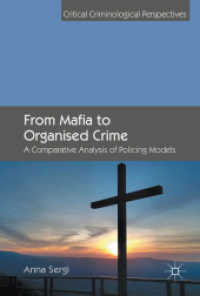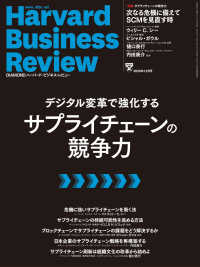- ホーム
- > 洋書
- > ドイツ書
- > Mathematics, Sciences & Technology
- > Chemistry
Full Description
This outstanding thesis describes a detailed investigation into the use of low-oxidation-state group 14 complexes in catalysis, developed at the cutting edge of inorganic and organometallic chemistry. It includes the preparation of a number of landmark compounds, some of which challenge our current understanding of metal-metal bonding and low-oxidation-state main group chemistry. Among the many highlights of this thesis, the standout result is the development of the first well-defined, low- oxidation-state main group hydride systems as highly efficient catalysts in the hydroboration of carbonyl substrates, including carbon dioxide, which are as efficient as those observed in more traditional, transition-metal catalyses. These results essentially define a new subdiscipline of chemistry.
Contents
General Introduction.- The Development of Extremely Bulky Amide Ligands and their Application to the Synthesis of Group 14 Element(II) Halides.- Synthesis and Reactivity of Heavier Alkyne Analogues Stabilised by Extremely Bulky Amide Ligands.- Reactivity of Low-Coordinate Group 14 Element(II) Hydride Complexes.- Stoichiometric Reactivity and Catalytic Applications of Heavier Tetrelene Derivatives.- The Use of a Bulky Boryl-Substituted Amide Ligand in Low-Oxidation State Group 14 Element Chemistry.








